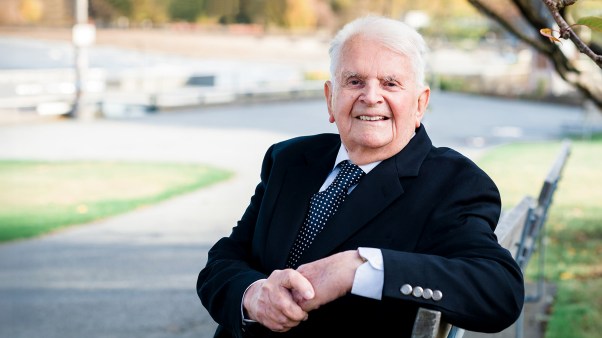Rising from the Ashes: Rethinking Church explores the interface between the emerging church and traditional, liturgical churches. The book is a series of interviews — the author, Becky Garrison, describes it as a “salon.” It’s a helpful (if poorly edited) sampling of discussions about recovering authentic Christian witness in postmodern urban culture.
Becky Garrison, senior contributing editor for the Wittenburg Door, had in-person, phone, e-mail, blog, and IM interactions with 33 people, most of whom are involved in “emerging” groups, “alternative worship,” or other innovative worship practices. About half of the contributors are of the Episcopal/Anglican tradition; nearly half are women.
Garrison asked about the role of doctrine in emergent experiments and the relationship between newer forms of church and traditional churches. She guides discussions on a variety of topics, asking questions such as:
How do you respond to conventional wisdom that the mainline churches are dying? (of Phyllis Tickle and Martha Grace Reese)
Why do you define “alternative worship” as postcharismatic and postevangelical? (of Jonny Baker)
How do you reconcile the need to affirm orthodoxy without becoming exclusionary snobs? (of Brian McLaren)
How do we balance the experience of the church with the authority of Scripture? (of N. T. Wright)
What do you say to all those who feel all you have to do is light some candles, turn down the power praise music, and viola — you have an emerging church service? (of Nadia Bolz-Weber and Jonny Baker)
Define ritual, and how do you see ritual as being redefined for the 21st century? (of Kurt Nielson, Elise Brown, and Rick Fabian)
What have you learned about God from your ministry with prostitutes? (of Kurt Nielson)
Eight themes permeate the book:
- Hope! These folks are hopeful about a substantial and authentic rebirth of the church in postmodern culture, and their hope sparks a lot of creativity and risk-taking.
- A new partnership between traditional churches and emerging churches. Episcopal and Anglican leaders are building bridges from older liturgical forms of church worship to emergent forms. Jonny Baker works with the (Anglican) Church Mission Society to “reimagine worship, faith, and community in postmodern/emerging cultures.” Karen Ward (abbess of Seattle’s Church of the Apostles) is excited about “amazing ‘convergence'” she finds “between Anglican ethos and practice and [that of] the emerging church.”
- The priority of engaging postmodern youth and young adults, especially PUPs (Postmodern Urban Professionals). The book is fairly culture-specific to this demographic, both a strength and limitation. Emerging experiments are not really (for the most part) engaging the poor, or working-class people, or people less affected by postmodernism. They’re reaching PUPs.
- Things are different in the U.K. Ian Mobsby (priest missioner with the Moot Community, Diocese of London) says emerging-church discussions have occurred longer there “because there is more of a crisis in the church than in the U.S. — we are slightly ahead of you in the postmodern context.”
- Humility. The mood is a chastened one, pained by the failures of the church and aware of the danger of seeing new experiments as magic keys to renewal. Says Steven Croft (Team Leader of Fresh Expressions, a joint Methodist-Anglican venture), “Nobody knows quite what they’re doing, but there is humility of the heart, which is enabling new learnings.”
- Theology, not just pragmatism, is important. Crucial theological reflection is occurring at “the interface between missiology and ecclesiology” (Croft) and the interplay between how the gospel impacts culture and how culture understands the gospel. Emphasis is more on the kingdom of God (a concept not fully spelled out in the book, but having to do with the church’s redemptive and transforming role in the world), than on the church and tradition. Still, there is considerable love for the liturgy.
- The emerging-church endeavors in which the interviewees are involved focus heavily on participation, integration, collaboration, networks, relationships, and mutuality — a product of a postmodern mood and Internet culture. Kester Brewin connects this also with complexity theory and self-organizing systems that “don’t need top-down hierarchies to evolve.”
Clearly the megatrend “from hierarchies to networking” John Naisbitt flagged 25 years ago is in full bloom. The key is to operate non-hierarchically within the essentially hierarchical system of traditional churches. Relationships can be more open and personally transforming when not based upon one’s status within the hierarchy, interviewees say.
- The focus of the interviewees is more on the worship service (and therefore worship space and buildings) than on other aspects of Christian life, reflecting the liturgical context of most of the contributors. Insights abound on developing worship that resonates with “emerging” trends, yet is tied to a sense of history. Since the book is about “Rethinking Church,” I expected a broader discussion of community structures, discipleship, and forms of witness and cultural engagement (other than through the worship service). These are not totally absent, but they are not given equal weight.
Much that is said here under the label “emergent” has been attempted in the past under different labels. The criticisms of traditional Christianity and proposals for new forms of the church echo, in different accents, voices from the 1960s and 1970s. Many of the proposed solutions are similar.
However, both the stirrings and the critique are deeper, as several factors converge: the ferment of postmodernism, new discussions of the mission of God (missio Dei) and the Trinity, denominational decline in both liberal and conservative churches, the increasing importance of youth culture, the rise of the Internet and other new communication technology, and intensified globalization.
This book shows that deep social and spiritual currents are stirring. Many evangelical churches look more and more like mainline churches, and many mainline churches may be at the tip of renewal.
Howard A. Snyder is the chair of Wesley studies at Tyndale Seminary in Toronto and a contributing editor at Christianity Today.
Copyright © 2008 Christianity Today. Click for reprint information.
Related Elsewhere:
Rising from the Ashes: Rethinking Church is available from Amazon.com and other retailers.
An excerpt from the book, about technology and the gospel, is also on our site today.
Scot McKnight profiled the “5 Streams of the Emerging Church.”
More articles on the emergent church and modern media are available on our website.








